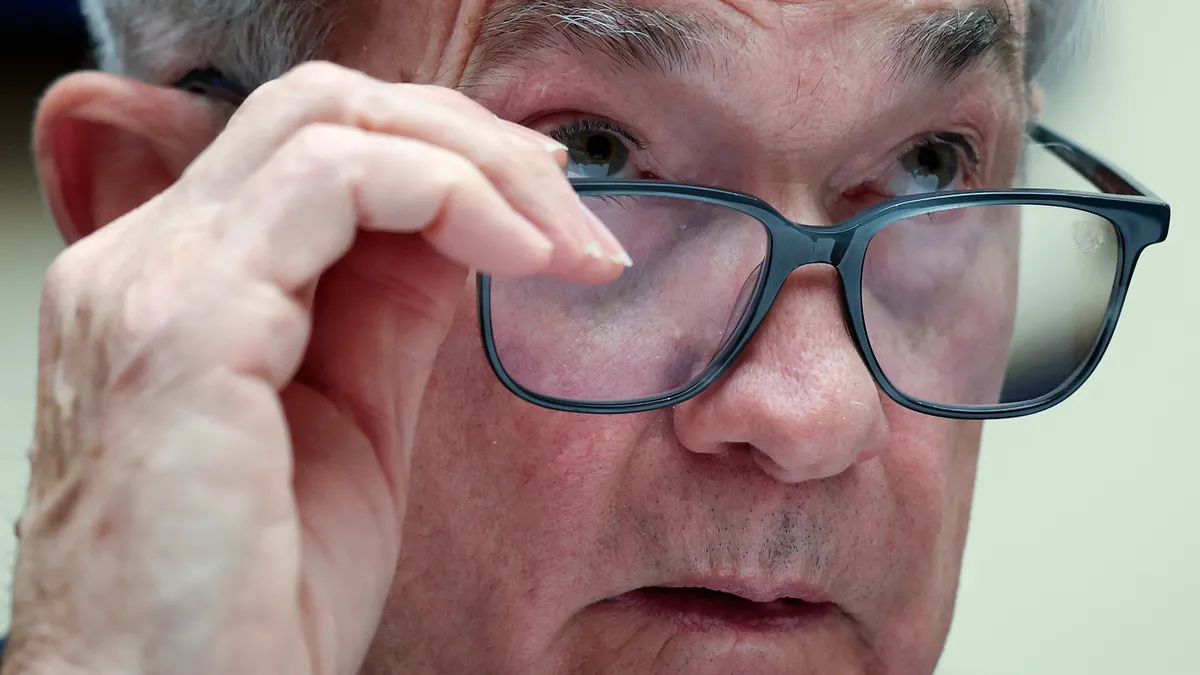Dive Brief:
- The Federal Reserve on Wednesday raised the federal funds rate by a quarter point, downshifting its aggressive monetary tightening amid several signs that the economy is slowing and inflation is steadily cooling.
- Policymakers, in a statement announcing the slight increase in the main interest rate to a range of 4.5% to 4.75%, said they expect that “ongoing increases in the target range [of the benchmark rate] will be appropriate.” The comment signals that Fed officials currently lean toward raising the federal funds rate again at their next two scheduled meetings in March and May.
- “While recent developments are encouraging, we will need substantially more evidence to be confident that inflation is on a sustained downward path,” Fed Chair Jerome Powell told a news conference on Wednesday. “We will stay the course until the job is done,” and inflation slows to the central bank’s 2% target.
Dive Insight:
Fed policymakers concluded a two-day meeting after reviewing indications that price pressures are falling. Their preferred inflation gauge — the core personal consumption expenditures price index excluding food and energy —fell to 4.4% in the year through December from an annual pace of 5.2% in September.
The Fed needs to see more signs of disinflation before changing course, Powell said, adding that he does not expect the central bank to reduce interest rates this year.
Policymakers should lean toward tightening too much rather than too little, Powell said. “It’s very difficult to manage the risk of doing too little and finding out in six or 12 months that we actually were close but didn’t get the job done, and inflation springs back,” requiring the Fed to resume raising interest rates.
Powell and several other policymakers have said they will not halt the fight against inflation until they see a sustained decline in price pressures. Fed officials have repeatedly said that the central bank erred when combating inflation during the 1970s by reducing borrowing costs too early and triggering a resurgence in price pressures.
“The historical record cautions strongly against prematurely loosening policy,” Powell said.
The U.S. will avoid a downturn in 2023, Powell predicted, while noting some economists and market analysts expect a recession. “My base case is that the economy can return to 2% inflation without a really significant downturn or a really big increase in unemployment.”
“Many forecasters would say it’s not the most likely outcome, but I would say there’s a chance of it,” he said, adding “positive growth will continue but at a subdued pace.”
The economy during last quarter grew at a 2.9% annual rate compared with a 3.2% year-over-year pace during the third quarter. Other data show that 2022 ended with an ebbing in consumer spending, manufacturing and wage growth.
Worker compensation rose 1% during the October through December period compared with gains of 1.2% in the third quarter and 1.4% in the first quarter of 2022, the Labor Department reported Tuesday.
Despite the steady withdrawal of monetary stimulus, the job market remains overheated, with unemployment at a 50-year low of 3.5% and the demand for workers far outstripping supply.
“The labor market remains extremely tight,” Powell said, and “continues to be out of balance.”
U.S. job openings rose to 11 million in December from 10.4 million the prior month, the Labor Department said Wednesday. The ratio of openings to job seekers increased to 1.9 from 1.7 in November.
Amid signs of an improving inflation outlook, debt and equity markets have gained strength on speculation the Fed will pause monetary tightening this spring. Since the start of 2023 the Standard & Poor’s 500 Index has gained 7.3% and the yield on the 10-year Treasury Note has fallen to 3.42% from 3.75%.
“Inflation has slowed down, but I am not sure that it is on a sustained downward path,” Aleksandar Tomic, director of the graduate programs in applied economics and applied analytics at Boston College, said.
“The Fed is maintaining an aggressive stance while definitely trying to observe the impact of its rate increases,” Tomic said in an email response to questions, predicting that the central bank will raise the federal funds rate again at its March 21-22 meeting.












